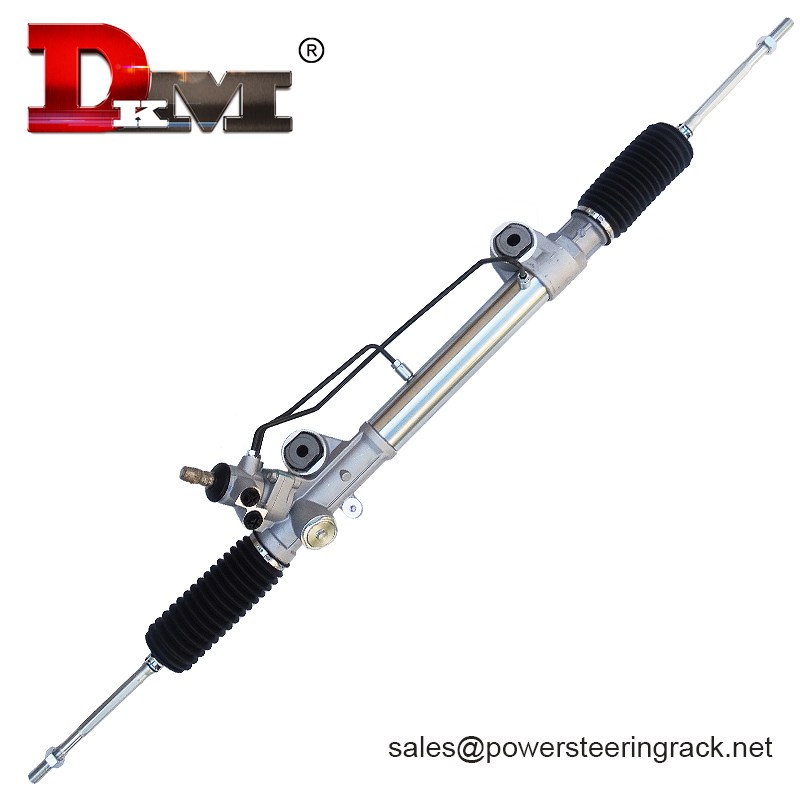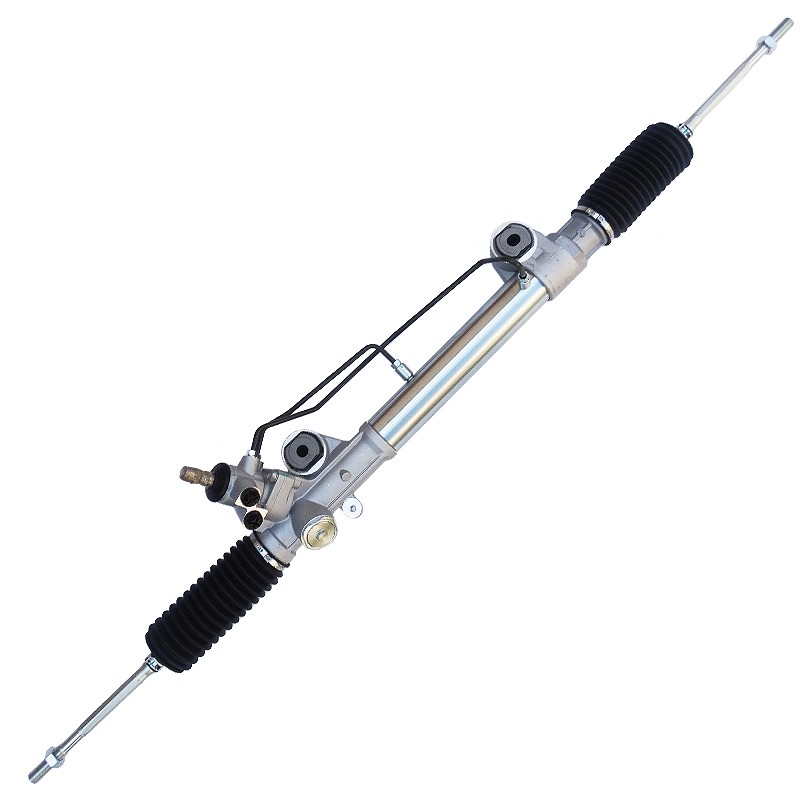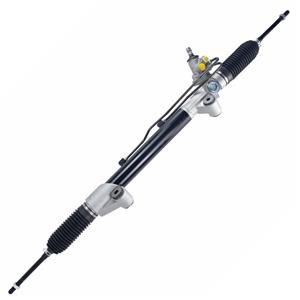What is the most advanced steering system?
In the modern automobile industry, the steering system is an important part of ensuring driving safety and controllability. With the continuous advancement of automobile technology, the steering system has also experienced significant development. From the earliest mechanical steering to today's highly automated and electrified systems, automobile manufacturers and engineers continue to pursue more efficient, safer and more comfortable systems. Turn to technology. So, what is the most advanced steering system currently available?
This article will discuss various existing advanced steering systems and analyze their working principles, advantages and applications in detail.

The evolution of traditional steering systems
Before discussing the most advanced steering systems, it is necessary to understand the development history of steering systems. The earliest automobiles used mechanical steering systems, such as rack and pinion and recirculating ball steering. These systems rely primarily on mechanical connections to transmit the driver's steering input directly to the wheels.
With the advancement of the automobile industry, hydraulic power steering systems (HPS) have gradually replaced purely mechanical steering systems. This system provides power to the steering through a hydraulic pump, reducing the force required by the driver to turn the steering wheel, making driving easier. Hydraulic power steering systems were widely used in various vehicles after the 1970s until the emergence of electric power steering systems (EPS).
The emergence of electric power steering marks a major leap in steering technology. EPS uses electric motors instead of hydraulic pumps to provide assistance, which not only improves the response speed of the system, but also reduces fuel consumption because it only consumes energy when assistance is needed. EPS has become the standard feature of most new cars in the 21st century and has gradually replaced the traditional hydraulic assist system.
The most advanced steering system - Steer-by-Wire
Based on the above-mentioned steering systems, the most advanced steering system is undoubtedly the steering-by-wire system (SbW). The steer-by-wire system is a fully electronic steering system that does not rely on mechanical connections. It controls steering operations through electronic signals, eliminating the mechanical connection between the traditional steering wheel and the wheels. The emergence of this design completely subverts the traditional steering concept.
How the steering-by-wire system works
The core of the steer-by-wire system lies in its fully electronic design. When the driver turns the steering wheel, the sensor converts this movement into an electronic signal and transmits it to the steering control module. After calculation, the control module instructs the electronic actuator to adjust the steering angle of the wheel. In this process, all operations are completed through electronic signals, without the involvement of mechanical gears or hydraulic components.
At the same time, the steering-by-wire system can also make real-time adjustments based on the vehicle's driving status, road conditions and the driver's operating habits. For example, when driving at high speeds, the system will reduce the sensitivity of the steering wheel to improve stability, while at low speeds or when parking, the steering wheel will become more flexible for easier operation.
Advantages of steer-by-wire systems
● De-mechanized design: After eliminating the mechanical connection, the steering-by-wire system greatly reduces the weight of the vehicle and provides greater design freedom. The interior layout can be more flexible and is no longer limited by the fixed positions of the steering wheel and steering column.
● Precise steering control: Since there is no mechanical loss, the steering-by-wire system responds faster and the steering operation is more precise. Electronic control allows the system to adjust within milliseconds, providing greater safety and control.
● Adaptive function: The steering-by-wire system can automatically adjust the power assist and steering wheel sensitivity according to different driving conditions, providing the best driving experience. This adaptive function is particularly useful in complex road conditions or special driving conditions.
● Integrated advanced driver assistance systems (ADAS): The steer-by-wire system can be seamlessly integrated with advanced driver assistance systems (ADAS), such as automatic parking, lane keeping and autonomous driving. Due to its fully electronic design, the system can communicate more easily with other electronic systems of the vehicle to achieve highly automated driving functions.
Steer-by-wire system challenges and limitations
Although steer-by-wire systems have many advantages, their development also faces certain challenges and limitations.
● Safety issues: Since steer-by-wire relies entirely on the electronic system, once the electronic control module or sensor fails, it may lead to loss of steering control. Therefore, steer-by-wire systems are usually designed with redundant systems to ensure that basic steering functions can be maintained if the primary system fails.
● High cost: The R&D and manufacturing costs of steer-by-wire systems are high, which makes them currently mainly used in high-end models and concept cars. As the technology matures and is produced on a large scale, the cost is expected to gradually decrease, but it is still the main obstacle to its widespread adoption.
● Consumer acceptance: For drivers accustomed to traditional mechanical steering systems, the "no feedback" feature of steer-by-wire systems may take time to get used to. Although electronic systems can simulate the feeling of mechanical feedback, there are still some drivers who prefer traditional mechanical connections.

Other advanced steering systems
In addition to steer-by-wire systems, some other advanced steering systems are also being developed and applied.
Rear-Wheel Steering (RWS)
The rear-wheel steering system is an auxiliary steering system that improves the vehicle's handling and stability by controlling the steering angle of the rear wheels. When driving at low speeds, the rear wheels rotate in opposite directions to the front wheels to reduce the turning radius and enhance flexibility; when driving at high speeds, the rear wheels rotate in the same direction as the front wheels to improve vehicle stability.
This kind of system is widely used in high-performance models and luxury cars, providing a better driving experience by improving the vehicle's steering response and handling performance.
Adaptive Steering
Adaptive steering automatically adjusts the steering ratio based on vehicle speed and driving conditions. When driving at low speeds or parking, the steering ratio of the steering wheel will increase, making it easier to turn the steering wheel; while when driving at high speeds, the steering ratio will decrease, improving vehicle stability and driving safety.
This system is usually used in conjunction with an electric power steering system (EPS) to adjust the steering ratio through electronic controls to provide a better driving experience.
All-Wheel Steering (AWS)
All-wheel steering is similar to rear-wheel steering, but it controls the steering angle of both the front and rear wheels. By coordinating the steering of the front and rear wheels, the AWS system can significantly improve the vehicle's handling performance and stability, especially when changing lanes on narrow roads or at high speeds.
The AWS system is currently mainly used in some high-end SUVs and sports cars. It has attracted the attention of many consumers by enhancing controllability and driving pleasure.

The most advanced steering system applicable scenarios
Although steer-by-wire systems are considered the most advanced steering systems available today, their suitability also depends on the type of vehicle and usage scenario.
● High-end luxury cars and sports cars: In these models, driving performance and technological sense are often the focus of consumers' attention. Advanced steering technologies such as steer-by-wire systems and rear-wheel steering systems can provide excellent handling performance and driving experience, so they have been prioritized in these models.
● Autonomous vehicles: For autonomous vehicles, steer-by-wire systems are almost indispensable. Its fully electronic design facilitates integration with the autonomous driving system to achieve more precise control.
● Urban driving and narrow road sections: In urban driving and narrow road sections, the rear-wheel steering system and all-wheel steering system can significantly improve the vehicle's maneuverability, making it easier for the vehicle to complete operations such as parking and turning around.
● Off-road and complex road conditions: In off-road and complex road conditions, the adaptive steering system can adjust the steering ratio according to real-time road conditions to improve the vehicle's stability and passability.




